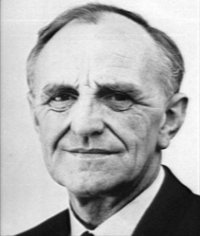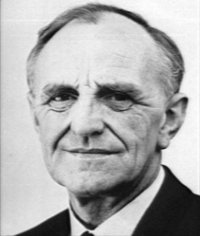By Prof. Levine & Dr. Salganik
Hello to our readers,
Dissociative Identity Disorder, which was previously known as "Multiple Personality Disorder", is one of the most controversial topics in psychiatry and psychology. In recent years, there has been an increase in awareness of complex dissociation situations, along with an in-depth discussion of the validity of the disorder, its prevalence and how to treat it.
In this article we will examine dissociative identity disorder through a theoretical model for the "Self" which consists of three main components: (1) the "primary self" (2) the "directorate of internalized characters", and (3) the "internalized enemies’ group ".
We will also discuss therapeutic options derived from the model, referring to the individual sensitivity channels, to the influence of positive (mostly within the “directorate of characters”) and negative internalized figures (enemies) on the mental structure, and to the role of the inner leader in the board of internalized figures in the rehabilitation process.

AI-assisted illustration of the dissociative identity disorder
Dissociative identity disorder is defined as a mental condition in which two or more identities exist in the same person, where each identity is characterized by a different self-concept, behavior style, and even different memories (American Psychiatric Association [APA], 2013). In many cases, there are significant gaps in the autobiographical memory, feelings of disconnection (derealization/depersonalization) and loss of time (Putnam, 1989).
Various studies indicate that dissociative identity disorder often develops as a response to complex or persistent trauma in childhood, such as physical, emotional or sexual abuse.
There are researchers and clinicians who question the reported prevalence rate of dissociative identity disorder and claim that many cases may be mistakenly labeled as a result of incorrect use of hypnotic techniques or overidentification. On the other hand, there is clinical and empirical evidence that quite a few patients with dissociative identity disorder are not properly diagnosed.
Read more »
By Prof. Levine & Dr. Salganik
שלום רב לקוראינו
הפרעת זהות דיסוציאטיבית,, (Dissociative Identity Disorder) שהייתה מוכרת בעבר כ"הפרעת אישיות מרובה" (Multiple Personality Disorder),או מרובת פנים, מהווה אחד הנושאים השנויים ביותר במחלוקת בפסיכיאטריה ובפסיכולוגיה. בשנים האחרונות חלה עלייה במודעות למצבי דיסוציאציה מורכבים, לצד דיון מעמיק באמיתות ההפרעה, בשכיחותה ובאופן הטיפול בה. בכתבה זו נבחן את הפרעת זהות דיסוציאטיבית דרך מודל תיאורטי ל"עצמי " המורכב משלושה רכיבים מרכזיים: (1) "העצמי הראשוני" (2) "דירקטוריון הדמויות המופנמות", ו-(3) "קבוצת האויבים".
הכתבה סוקרת את המאפיינים הקליניים והאבחוניים של הפרעת זהות דיסוציאטיבית , את הקשר ההדוק בין ההפרעה לטראומה מוקדמת, ומתארת כיצד ניתן ליישם את המודל המוצע להבנה מעמיקה יותר של הדינמיקה הפנימית והיחסים בין חלקי האישיות השונים אצל הסובלים מההפרעה. כמו כן, נדון באפשרויות טיפוליות הנגזרות מן המודל, תוך התייחסות לערוצי הרגישות האישיים, להשפעה של דמויות מופנמות חיוביות, ושליליות (אויבים) על המבנה הנפשי, ולתפקיד המנהיג הפנימי בדירקטוריון הדמויות המופנמות בתהליך השיקום.

איור בעזרת AI: המחשת הפרעת זהות דיסוציאטיבית
הפרעת זהות דיסוציאטיבית מוגדרת כמצב נפשי שבו מתקיימות שתי זהויות או יותר באותו אדם, כאשר כל זהות מתאפיינת בתפיסה עצמית, סגנון התנהגות, ואף בזיכרונות שונים (American Psychiatric Association [APA], 2013). במקרים רבים, קיימים פערים משמעותיים בזיכרון האוטוביוגרפי, תחושות ניתוק (דֶרֶיאליזציה/דֶפֶרסונליזציה) ואובדן זמן . (Putnam, 1989) מחקרים שונים מצביעים על כך שהפרעת זהות דיסוציאטיבית מתפתחת לרוב כתגובה לטראומה מורכבת או מתמשכת בילדות, כמו התעללות פיזית, רגשית או מיני.
יש חוקרים וקלינאים המטילים ספק בשיעור השכיחות המדווח של הפרעת זהות דיסוציאטיבית וטוענים כי ייתכן שמקרים רבים מתויגים בטעות כתוצאה משימוש שגוי בטכניקות היפנוטיות או שמדובר בזיהוי יתר . מאידך, קיימים עדויות קליניות ואמפיריות לכך שלא מעט מטופלים עם הפרעת זהות דיסוציאטיבית אינם מאובחנים כראוי.
Read more »
By Prof. Levine & Dr. Salganik
Greetings to our readers,
Our model of mental life first assumes the existence of the "primary self", which is in fact the basic biological nucleus consisting of a number of innate structures and subject to increasing development during life, this self includes the instinctive emotional and cognitive parts of the person.
The primary self uses the reservoirs and mechanisms of emotion, memory and cognitive abilities and it contains primary nuclei for the future development of other mental structures.
Let's first refer to the primary self (biological predestined core): the primary self consists of innate biological structures and instincts that form the innate basis of the parts of the personality and it also included the cognitive processes and the emotional processes.
This primary self has its own dynamics during a person's life and is subject to changes with age, following illnesses, traumas, drug consumption, addiction, etc.
Both the instincts and the basic needs in each and every person change according to different periods of development and aging – (hence their effect on behavior) and may change through drugs, trauma, diseases and more.
Within the primary self is the potential for instrumental abilities that are innate, but they can also be promoted, or on the contrary, suppressed through the influence of the reference groups.
The primary self also has cognitive abilities that are partly innate and partly dependent on interactions with the environment during the first years of life.
In addition, it includes the temperament and emotional intelligence that are partly innate and partly dependent on interactions with the environment in the first years of life.
And finally, it includes an energy charge that is mostly innate but can be suppressed through the influence of the reference groups, as well as through various situational factors.
he primary self also includes the seven personal sensitivity channels: Individual Sensitivity Channels (ISC) which reflect our individual reactivity in response to stressors (both external and internal). So far we have identified seven channels of sensitivity:
1. Sensitivity regarding a person's status and position (the status channel).
2. Sensitivity to changes in norms (the norms channel).
3. Sensitivity in relation to emotional attachment to others (the attachment channel).
4. Sensitivity to threat (the threat channel).
5. Sensitivity to routine changes (the routine channel).
6. Sensitivity to a drop in the energy level and the ability to act derived from it (the energy channel).
7. Sensitivity to a variety of sensory proprioceptive aspects arising from the body (the proprioceptive channel).
The less sensitive the person is in these channels, the healthier he is mentally. Great sensitivity in one or more channels may demonstrate mental pathology.
Read more »
By Prof. Levine & Dr. Salganik
שלום רב לקוראנו
המודל שלנו לחיי הנפש מניח תחילה קיומו של "עצמי הראשוני", שהוא למעשה הגרעין הביולוגי הבסיסי המורכב ממספר מבנים מולדים ונתון להתפתחות גוברת במהלך החיים, עצמי זה כולל את החלקים האינסטינקטיביים הרגשיים והקוגניטיביים של האדם. העצמי הראשוני משתמש במאגרי ומנגנוני הרגש, הזיכרון וביכולות הקוגניציה והוא מכיל גרעינים ראשוניים להתפתחות עתידית של מבני נפש אחרים.
נתייחס תחילה לעצמי הראשוני (Biological Predestined Core): העצמי הראשוני מורכב ממבנים ביולוגיים מולדים ואינסטינקטים המהווים את הבסיס המולד של חלקי האישיות והוא כלל גם את תהליכים הקוגניטיביים והתהליכים הרגשיים. לעצמי ראשוני זה יש דינמיקה משלו במהלך חייו של האדם והוא נתון לשינויים עם הגיל, בעקבות מחלות, טראומות, צריכת סמים, התמכרות וכולי. הן האינסטינקטים והן הצרכים הבסיסיים אצל כל אדם ואדם משתנים בהתאם לתקופות התפתחות שונות והזדקנות – (ומכאן השפעתם על ההתנהגות) ועשויים להשתנות באמצעות תרופות, טראומה, מחלות ועוד.
בתוך העצמי הראשוני קיים הפוטנציאל ליכולות אינסטרומנטליות שהן מולדות, אך ניתן גם לקדם אותן, או להיפך, לדכא אותן באמצעות השפעתן של קבוצות הייחוס. לעצמי הראשוני יש גם יכולות קוגניטיביות שבחלקן מולדות ובחלקן תלויות באינטראקציות עם הסביבה במהלך שנות החיים הראשונות. בנוסף, הוא כולל את הטמפרמנט והאינטליגנציה הרגשית שהם בחלקם מולדים ובחלקם תלויים באינטראקציות עם הסביבה בשנים הראשונות לחיים. ולבסוף, הוא כולל מטען אנרגיה שהוא בעיקר מולד אך ניתן לדכא אותו באמצעות השפעת קבוצות הייחוס, כמו גם באמצעות גורמים מצביים שונים. ה
העצמי הראשוני כולל גם את ששת ערוצי הרגישות האישיים: ערוצי רגישות אינדיבידואליים (ISC) המשקפים את תגובתיות הפרט שלנו בתגובה לגורמי לחץ (חיצוניים ופנימיים כאחד). עד כה זיהינו שישה ערוצי רגישות:
1. רגישות לגבי מעמדו ומיקומו של אדם (ערוץ הסטטוס).
2. רגישות לשינויים בנורמות (ערוץ הנורמות).
3. רגישות ביחס להיקשרות רגשית לזולת (ערוץ ההתקשרות).
4. רגישות לאיום (ערוץ האיום).
5. רגישות לשינויים שגרתיים (ערוץ השגרה).
6. רגישות לירידה ברמת האנרגיה ויכולת הפעולה הנגזרת ממנה (ערוץ האנרגיה).
7. רגישות למגוון היבטים פרופריוצפטיביים תחושתיים העולים מן הגוף (הערוץ הפרופריוצפטיבי).
ככל שהאדם מגלה פחות רגישות בערוצים אלו כך הוא בריא יותר נפשית. רגישות רבה בערוץ אחד או יותר מדגימה פתולוגיה נפשית.
Read more »
By Prof. Levine & Dr. Salganik
Greetings to our readers,
The philosophical idea of substitution in the complex fabric of human thought, the concept of "substitute" emerges as both a practical and metaphysical entity. At its core, a substitute is what stands in the place of the other, a character entity or idea that fulfills, replaces or imitates the function of the original. However, to reduce the substitute to a mere placeholder is to ignore its profound implications in ontology, ethics, aesthetics, and epistemology.
Below we will explore the dimensions of the substitute, trace his philosophical genealogy and examine his resonance in contemporary thought.
The ontology of exchange
The substitute works in a dual mode: as a reflection and a deflection. In its reflective capacity, it reflects the essence of the source, striving to imitate its role or presence. However, in its deviation it symbolizes absence – a reminder of what is lost, incomplete or unattainable.
Heidegger's concept of "being" and "being-there" offers fertile ground for examining this duality. Substitution may be perceived as an attempt to restore or approximate an ontological presence, but at the same time it emphasizes the impossibility of complete replication.
For example, a portrait of a loved one. The portrait replaces his physical presence, evoking his essence but it also conspicuously marks his absence.
This duality invites reflection on the nature of reality and representation – an ancient discourse such as Plato's "allegory of the cave", in which the shadows serve as a substitute for the real, and confuse the boundaries between appearance and truth.
The ethics of substitute
Ethical considerations of substitute often revolve around the authenticity of the substitute and its consequences. Substituting one action, decision or entity for another is intrinsically value-laden, and carries implications about trust, responsibility and justice.
Emmanuel Levinas, in his reflections on alternatives and responsibility, touches on substitute through the ethical requirement to prioritize the other. Here, the substitute of the self with the other is not just a substitute but a deep ethical call – to stand by the other in his suffering or vulnerability.
However, ethical dilemmas arise when the exchange violates trust or diminishes the intrinsic value of the source. Replacing real relationships with business relationships, or replacing human work with automated processes, for example, raises questions about respect, autonomy and alienation.
These considerations invite us to examine the moral weight of alternative actions, and to demand a balance between necessity and irreplaceable respect.
Read more »
By Prof. Levine & Dr. Salganik
שלום רב לקוראנו
הרעיון הפילוסופי של התחליף
במארג המורכב של המחשבה האנושית, מושג ה"תחליף" מתגלה כישות מעשית ומטאפיזית כאחד. בבסיסו, תחליף הוא מה שעומד במקום האחר, ישות דמות או רעיון שממלא, מחליף או מחקה את הפונקציה של המקור. עם זאת, לצמצם את התחליף לשומר מקום בלבד פירושו להתעלם מהשלכותיו העמוקות באונטולוגיה, אתיקה, אסתטיקה ואפיסטמולוגיה. להלן נחקור את ממדי המחליף, נתחקה אחר שושלת היוחסין הפילוסופית שלו ונבחן את תהודתו במחשבה בת זמננו.
האונטולוגיה של ההחלפה
התחליף פועל במצב כפול: כהשתקפות וכסטייה. ביכולתו הרפלקטיבית, הוא משקף את מהות המקור, השואף לחקות את תפקידו או נוכחותו. עם זאת, בסטייתו הוא מסמל היעדר – תזכורת למה שאבד, לא שלם או בלתי ניתן להשגה. תפיסת ה"להיות" וה"להיות-שם" של היידגר מציעה קרקע פורייה לבחינת הדואליות הזאת. תחליף עשוי להיתפס כניסיון לשחזר או לקרב נוכחות אונטולוגית, אך בה בעת הוא מדגיש את חוסר האפשרות של שכפול מלא.
למשל דיוקן של אדם אהוב. הדיוקן מחליף את נוכחותו הפיזית, מעורר את מהותו אך הוא גם מסמן את היעדרו באופן בולט. דואליות זו מזמינה הרהור על טבע המציאות והייצוג – שיח עתיק כמו "אלגוריה של המערה" של אפלטון, שבו הצללים משמשים תחליף לממשי, ומבלבלים את הגבולות בין מראה עין לאמת.
האתיקה של ההחלפה
שיקולים אתיים של החלפה סובבים לעתים קרובות סביב האותנטיות של ההחלפה והשלכותיה. החלפת פעולה, החלטה או ישות אחת באחרת היא טעונת ערכים מטבעה, ונושאת השלכות אודות אמון, אחריות וצדק. עמנואל לוינס, בהרהוריו על אלטרנטיבות ואחריות, נוגע בהחלפה באמצעות הדרישה האתית לתעדף את האחר. כאן, החלפה של האני באחר אינה רק החלפה אלא קריאה אתית עמוקה – לעמוד לצד האחר בסבלו או בפגיעותו.
עם זאת, דילמות אתיות מתעוררות כאשר ההחלפה מפרה אמון או מפחיתה מהערך הפנימי של המקור. החלפת מערכות יחסים אמיתיות ביחסים עסקיים, או החלפת העבודה האנושית בתהליכים ממוכנים, למשל, מעלה שאלות על כבוד, אוטונומיה וניכור. שיקולים אלה מזמינים אותנו לבחון את משקלן המוסרי של פעולות חלופיות, ולדרוש איזון בין הכרח לבין כבוד לאין תחליף.
Read more »
By Prof. Levine & Dr. Salganik
Greetings to our readers,
The human ability to perceive is not a passive reception of stimuli nor is it purely "mental theater". This concept stems from complex interrelationships between the senses and the internal models of the brain. In order to survive and thrive, we must accurately analyze what arises externally from what is created in our soul internally. This distinction underlies everything from threat detection to social interaction.
However, delusions, hallucinations, and confusion can occur when the neural processes that maintain this boundary go awry.
Read more »
By Prof. Levine & Dr. Salganik
שלום רב לקוראנו
יכולת התפיסה האנושית אינה קליטה פסיבית של גירויים וגם לא "תיאטרון מנטלי" גרידא. תפיסה זו נובעת מיחסי גומלין מורכבים בין החושים לבין המודלים הפנימיים של המוח. כדי לשרוד ולשגשג, עלינו לנתח במדויק את מה שנובע חיצונית ממה שנוצר בנפשנו פנימה. הבחנה זו עומדת בבסיס כל דבר, החל מזיהוי איומים וכלה באינטראקציה חברתית. עם זאת, אשליות, הזיות ובלבולים יכולים להתרחש כאשר התהליכים העצביים השומרים על גבול זה משתבשים.
Read more »
By Prof. Levine & Dr. Salganik
Greetings to our readers,
Transitional objects, a term first coined by the British pediatrician and psychoanalyst Donald Winnicott, refer to physical objects used by children to ease the transition between dependence and independence, usually during the developmental stages of early childhood.
The following is a comprehensive overview of the definition, use, and theoretical implications of transitional objects as obtained by various researchers.
In addition, we will hypothesize about the neurobiological foundations of the phenomenon, and examine the areas of the brain involved in attachment and use of transitional objects. Through the synthesis of psychoanalytic theory, developmental psychology and neuroscience, we will try to contribute to a holistic understanding of transitional objects.

Donald Winnicott [197-1896]
Transitional objects play a significant role in child development, especially in facilitating the transition from initial dependence on primary caregivers to increased autonomy. The term "transitional object" was introduced by Donald Winnicott in 1953 and refers to an item, often a blanket or stuffed animal doll, that a child uses for reassurance and comfort when separated from their primary caregiver.
These objects serve as mediators between the child's inner world and external reality, and provide emotional regulation during key developmental transitions.
While Winnicott's conceptualization laid the foundations, later researchers built on and expanded the concept, exploring its psychological, developmental, and neurobiological dimensions.
Definition and use of transitional objects:
According to Winnicott, transitional objects are "first not me" objects that serve as a bridge between the infant's self and the world outside the mother.
They are used to help the child manage separation anxiety from their caregivers while providing comfort. Winnicott postulated that these objects embody a developmental transitional stage where the child's inner world of fantasy and outer reality begin to merge, allowing the child to explore the world independently.
Various scholars have expanded on Winnicott's work, offering different interpretations of the role and meaning of transitional objects. Bowlby's attachment theory, for example, sees transitional objects as representations of a secure base, providing emotional stability in times of distress.
Other developmental psychologists have emphasized the role of these objects in promoting emotional regulation and fostering a sense of security and continuity in the absence of a caregiver.

A teddy bear as a transitional object
Read more »
By Prof. Levine & Dr. Salganik
שלום רב לקוראנו
אובייקטי מעבר, מונח שנטבע לראשונה על ידי רופא הילדים והפסיכואנליטיקאי הבריטי דונלד ויניקוט, מתייחסים לחפצים פיזיים המשמשים ילדים כדי להקל על המעבר בין תלות לעצמאות, בדרך כלל בשלבי ההתפתחות של הילדות המוקדמת. להלן סקירה מקיפה של ההגדרה, השימוש וההשלכות התיאורטיות של אובייקטי מעבר כפי שהושגו על ידי חוקרים שונים. בנוסף, נשער אודות היסודות הנוירוביולוגיים של התופעה, ונבחן את אזורי המוח המעורבים בהתקשרות לאובייקטי המעבר והשימוש בהם. באמצעות הסינתזה של תיאוריה פסיכואנליטית, פסיכולוגיה התפתחותית ומדעי המוח, ננסה לתרום להבנה הוליסטית של אובייקטי מעבר.

דונלד ויניקוט [ 1896-197]
אובייקטי מעבר ממלאים תפקיד משמעותי בהתפתחות הילד, במיוחד בהקלת המעבר מתלות ראשונית במטפלים העיקריים לאוטונומיה מוגברת. המונח "אובייקט מעבר" הוצג על ידי דונלד ויניקוט בשנת 1953 ומתייחס לפריט, לעתים קרובות שמיכה או בובת בעל חיים ממולאת, שילד משתמש בו להרגעה ונחמה כאשר הוא מופרד מהמטפל העיקרי שלו. אובייקטים אלה משמשים כמתווכים בין עולמו הפנימי של הילד לבין המציאות החיצונית, ומספקים ויסות רגשי במהלך מעברים התפתחותיים מרכזיים.
בעוד שההמשגה של ויניקוט הניחה את היסודות, חוקרים מאוחרים יותר בנו על הרעיון והרחיבו אותו, וחקרו את ממדיו הפסיכולוגיים, ההתפתחותיים והנוירוביולוגיים.
הגדרה ושימוש באובייקטי מעבר:
על פי ויניקוט, אובייקטי מעבר הם אובייקטים "קודם כל לא אני" המשמשים גשר בין העצמי של התינוק לבין העולם שמחוץ לאם. הם משמשים בכדי לעזור לילד לנהל את חרדת הפרידה מהמטפלים שלו תוך מתן נחמה. ויניקוט הניח כי אובייקטים אלה מגלמים שלב מעבר התפתחותי שבו עולם הפנטזיה הפנימי של הילד והמציאות החיצונית מתחילים להתמזג, ומאפשרים לילד חקירה עצמאית של העולם.
חוקרים שונים הרחיבו את עבודתו של ויניקוט, והציעו פרשנויות שונות לתפקידם ולמשמעותם של אובייקטי מעבר. תיאוריית ההתקשרות של בולבי, למשל, רואה באובייקטי מעבר ייצוגים של בסיס בטוח, המספק יציבות רגשית בעתות מצוקה. פסיכולוגים התפתחותיים אחרים הדגישו את תפקידם של אובייקטים אלה בקידום ויסות רגשי ובטיפוח תחושת ביטחון והמשכיות בהיעדר מטפל.

דובי מצומרר כאובייקט מעבר
Read more »

 Prof. Joseph Levine, M.D. is an emeritus associate professor in the Division of Psychiatry, Faculty of Health Sciences, Ben Gurion University in Israel. Prof. Levine is a certified psychiatrist with clinical experience in controlled trials of adult psychiatric disorders and in psychotherapy. He was awarded a NRSAD independent investigator grant for the study of Creatine Monohydrate in psychiatric disorders -- mainly Schizophrenia. He resides and treats patients in Tel Aviv and all of central Israel.
Prof. Joseph Levine, M.D. is an emeritus associate professor in the Division of Psychiatry, Faculty of Health Sciences, Ben Gurion University in Israel. Prof. Levine is a certified psychiatrist with clinical experience in controlled trials of adult psychiatric disorders and in psychotherapy. He was awarded a NRSAD independent investigator grant for the study of Creatine Monohydrate in psychiatric disorders -- mainly Schizophrenia. He resides and treats patients in Tel Aviv and all of central Israel.




